Today, the biblical destination has become an ethereal destination for tourists.
After an overnight stay in Istanbul, we drove to the airport at the break of dawn to go on a Turkish Airlines flight to Kayseri. This was the preferred hub to the 160-square-kilometer Anatolia Region.
Our main destination was Cappadocia, a jarring contrast of natural wonders and fanciful architecture, some 730 kilometers from the capital.
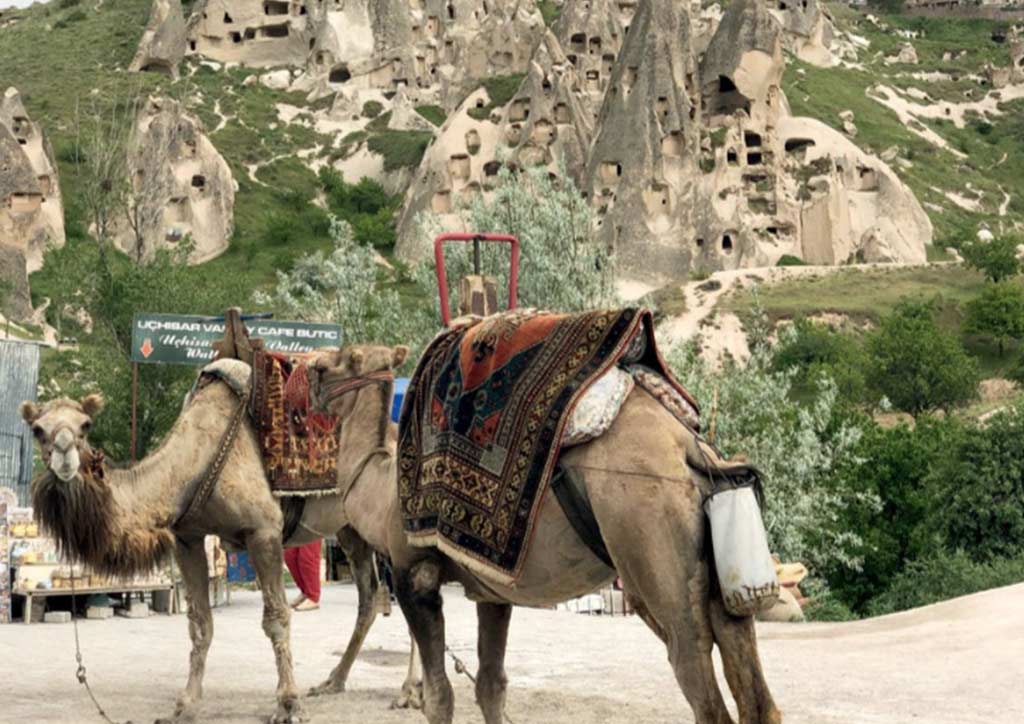
Its name, of course, is in The Bible, mentioned in the Acts of the Apostles (Chapter Two, Verse Nine). It is derived from Katta Peda, which means “place below,” in the language of the Hittite Empire.
Today, it has become an ethereal destination for tourists and travelers, environmentalists and archaeologists, adventurers and the devout, and even the curious, who wish to seek out its many quirks.
History and heritage
We walked through the picturesque town of Avanos, our entry point, and crossed the hanging bridge over the fabled Red River. The water reflected a beautiful local mosque, with two minarets piercing through the skies, amidst the lush green scenery.
At this early point in our trip, we already felt a magical, magnetic pull, which entranced and held us captive until we arrived at Monk’s Valley. Registered as a United Nations World Heritage Site in 1985, it is notable for its fairy chimneys and standout thin earth pillars. These are totem-pole shaped spikes made of soft rock with pieces of hard boulders. It protrudes from the bottom of arid plains, ranging from six feet to several stories high.
Siituated at the center is Pacha’s Vineyard, where some of the cones were split into smaller portions in the upper parts, wherein hermits once settled.
Speaking of hermits, our Istanbul-based tour guide Vulcan shared local folklore of a holy man who lived in seclusion near Aleppo, Syria. As several miracles were being attributed to him, he shied away from attention and found refuge here. He would rarely descend from his hole, and if ever, only to fetch basic sustenance.
Soon, other hermits followed his lead, by turning the hollowed out rock formations into quarters. Today, a chapel dedicated to Saint Simon—the holy man of yore—and a shelter for solitary ones, had been established in chimneys with three heads.
Five kilometers away was the Devrent Valley, likewise called the Imaginary Valley, for it did not have churches nor castles. In fact, it had never been inhabited. What was unique is its iconic lunar landscape, formed by various rock formations, where we imagined strange otherworldly stone shapes, such as dolphins and seals, and even a camel.
We just let our imaginations run wild, akin to staring at fast-moving white clouds on clear blue skies, creating certain form and shapes, as we tried to make out several other peculiar figures. As we prepared to move on, our tour guide teased us “Did you see the one similar to the Virgin Mary, holding the baby Jesus?” he asked.
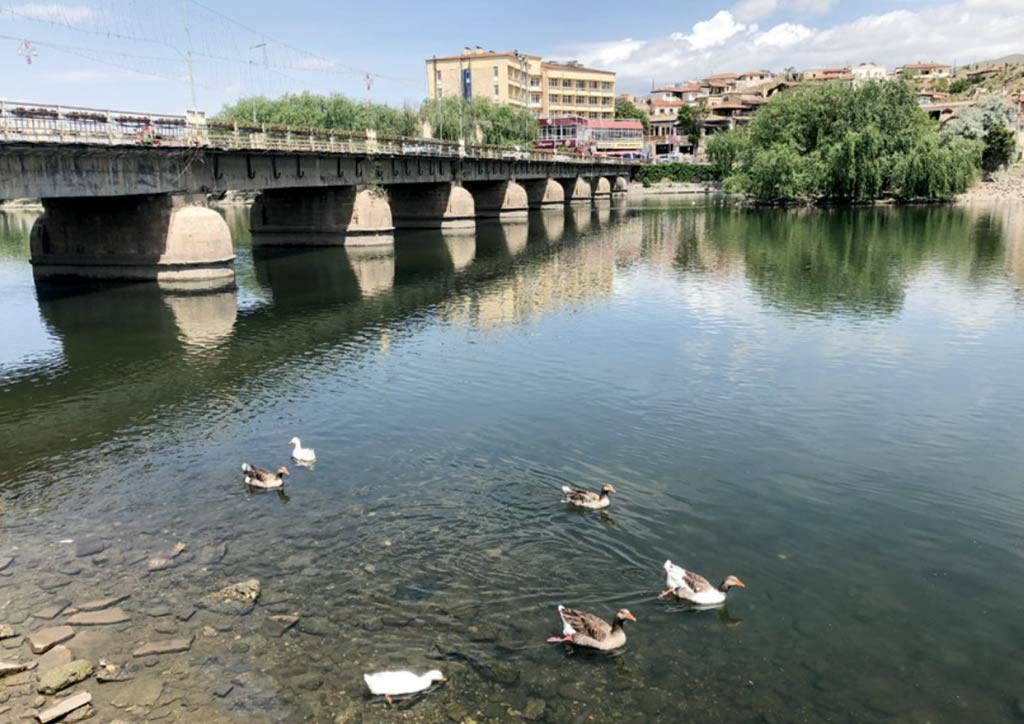
For our 48-hour-two-night-stay upon the suggestion of our operator Intas Destinations, we were billeted at the MDC Cave Hotel in the old town of Urguk, nestled by the side of a mountain.
Upon arrival, we visited each others’ caves—a first for all my traveling buddies. Each of the 46 chambers come in all shapes, sizes, and designs, as it took advantage of the region’s soft stones, by shaping them into high-quality shelters. Each had its own unbelievable story, all well restored under the masterful assistance of the UNESCO Heritage Center guidelines.
It was without a doubt, a never-again-to-be- experienced type of accommodation, full of history and heritage, luxury and style, charm and character.
Early the following morning, as we admired the spectacular view of the valley interspersed by patches of green and enjoyed pure mountain air, we spotted two local ladies. They had turbans on their heads and scarves on their necks, and were happily squatting by a low table, busy as they folded sort of a crepe-lumpia hybrid filled with nuts, jelly, and cheese.
Unique culture
We opted for a traditional Turkish breakfast: a large tray with slices of white cheese, a variety of tomatoes, loads of cucumber, black and green olives, a wide array of fruit jams, honey and butter, omelettes and boiled eggs, sucuk—dried sausage made of beef, garlic, pepper, and cumin-breads with choices of white, grain and rye; all served with black tea. Someone whispered that Turks don’t have coffee—of any kind—with their breakfast.
The first activity of the second day was a carpet-making lecture and workshop, a highly informative and educational opportunity. It was hosted by a zealous expert who seemed like
he had a couple of Ph.D. degrees as he proudly yet philosophically discussed the values of the world of kilims, rugs, and carpets.
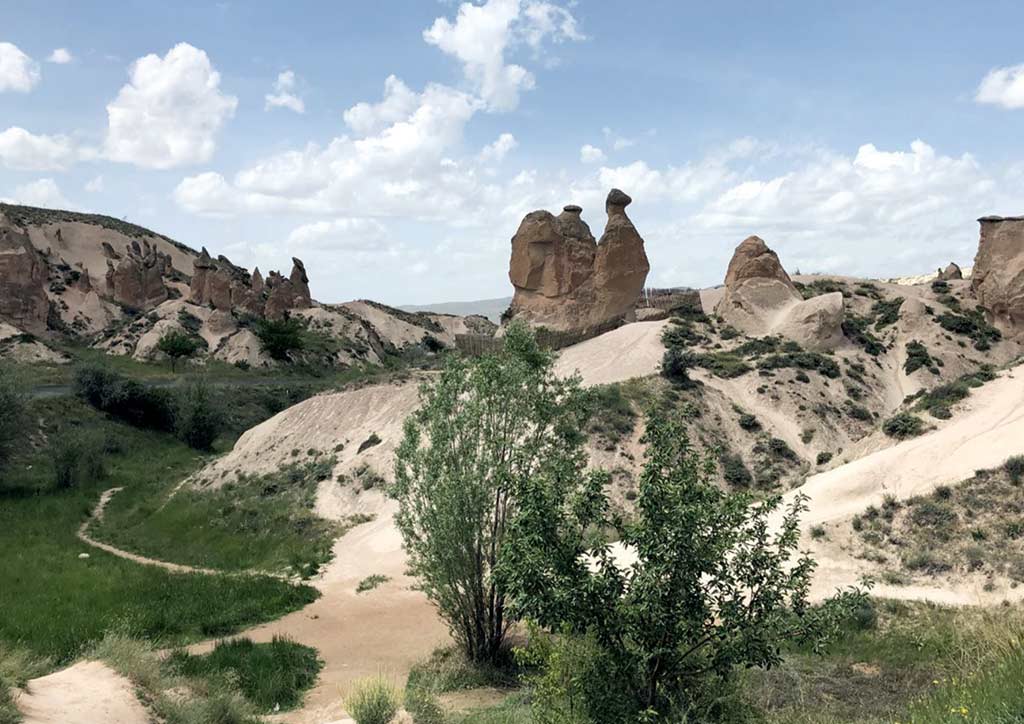
A number of women weavers with tiny and thin hands masterfully slipped their fingers in and out of the loom with yarns of silk, cotton and other fabrics, to craft fabulous colorful pieces of art, beautiful enough to be framed and hung for display.
Best of all, there was no hint at all whatsoever, nor pressure for us to purchase anything. It was all done with passion and love to preserve the traditional practice of carpet making.
We then headed to the Kaymakli Underground City, another registered UN World Heritage Site, one of hundreds of subterranean dwellings in the region. There, we zeroed in on a demonstration area, where we could not help but admire the cross-section beneath the surface.

It was a network of passages, tunnels, and corridors that linked communal rooms to one another, with several ventilation ducts to provide fresh air, and limited water wells.
We only ventured into the first landing and were already in awe of a city like no other we’ve seen before. Definitely a different world, yet still very similar, for they had the same establishments: houses, chapels, schools, markets, and cellars.
The undisputed must-visit destination in all of Cappadocia was the Goreme Open Air Museum, A UNESCO World Heritage Site member since 1984.
Reminiscent of a monastic complex, it is composed of several nearby worship centers, Each had its own devotion to a particular saint, displaying distinct architectural techniques, and own original frescoes.
Sacred sites
We stood before The Nunnery, formerly inhabited by persons who chose a solitary life of seclusion.
The first floor contained the dining hall and the kitchen, while the second had the ruined chapel. The third level, they claimed, as it is only accessible through a narrow tunnel, housed the church with a cruciform plan and a dome with four columns and three apses.

There was so much to see so we went on an impromptu visita iglesia, and some standouts included the Saint Barbara Church, with a red motif directly painted on to the rocks, with various animal, military and geometric patterns; The Apple Church, a vividly colored chapel which stood out from the rest, with frescoes that narrated scenes from the Bible.
There was also the Snake Church, a simple elongated structure that carried the image of Christ with a book in hand, Apostle Thomas who is claimed to be the founder of this particular house of worship, and the Killing of the Snake by Saint George; and the Dark Church, with entry through a winding tunnel that opened up to a wide area, which contained three graves. It also had scenes on the walls that depicted Journey to Bethlehem, the Nativity, the Baptism, the Last Supper, the Betrayal of Judas and the Crucifixion.
We continued our walk to the Carikli Church, also called the Sandals Church, due to footprints found under its ascension.
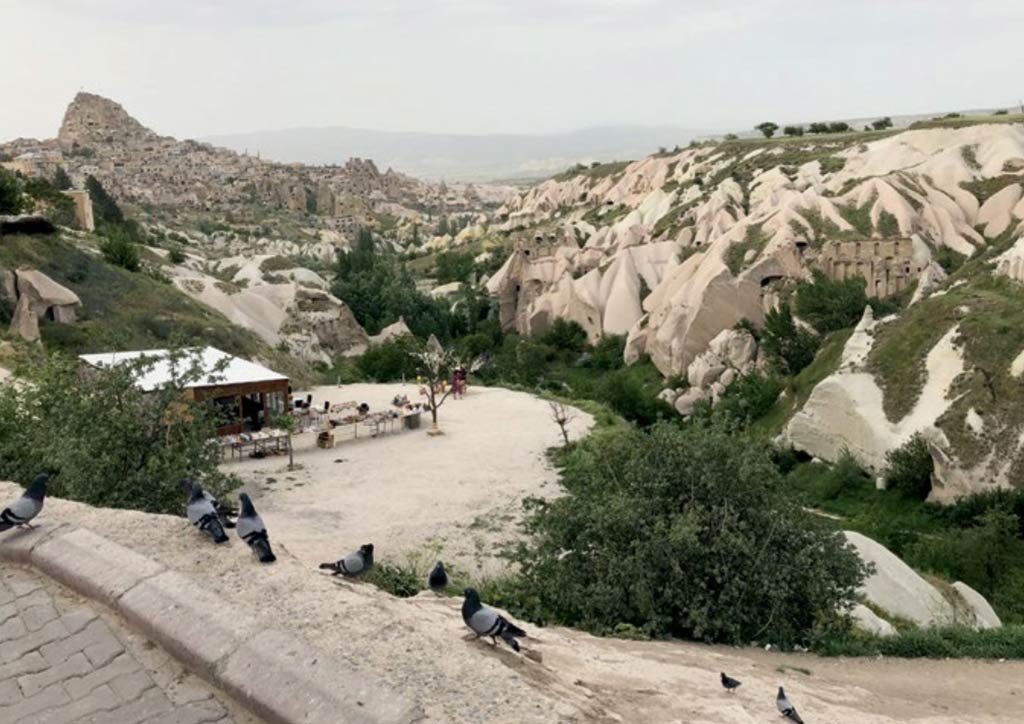
It boasted of paintings not found in the others, such as the Way of the Cross and the Descent from the Cross; the Buckle Church, a separate entity on its own, with four main chambers of various art pieces, yet still considered as part of the museum; and the Tokali Church, tinged with a unique indigo main chamber, that housed some of the most critically acclaimed and detailed murals.
In all, it reminded us of our own Intramuros, which once upon a time had nine churches within the walls of the fortified city.
We then traversed the Pigeon Valley, named after the countless man-made shelters for avians, carved into soft volcanic stones. These birds played an integral role in Cappadocia, where they served as messengers while their droppings were used as fertilizers, and at times, sadly as food. While the population has migrated, locals still maintain these resting places.
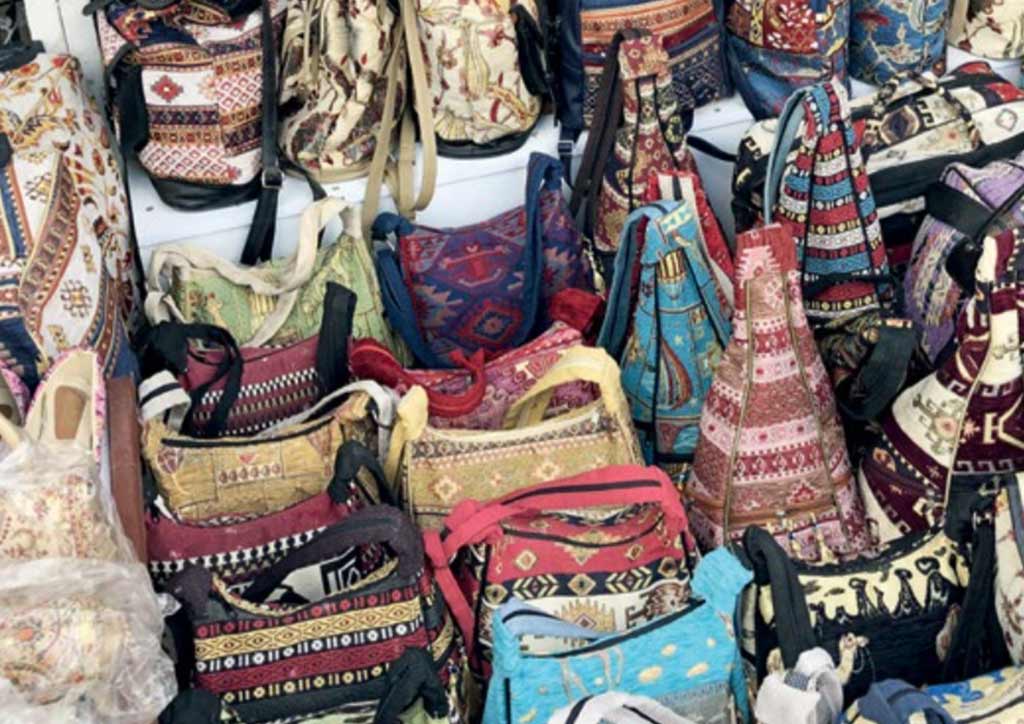
Dominating the entire wide area was Uçhisar Castle, the highest point in the region, and thus, provided the most breathtaking panorama. Like most monumental fields around the globe, a view before sunrise is recommended to appreciate the picturesque sight of the entire crevice.
Surrounding the area are numerous leafless trees which were fully decorated with nazars, various dimensions of the Blue Evil Eye artifact, which is believed to ward the wearer from bad curses. I could not resist but had a photo of myself taken!
As the local region is widely known for its ceramics and earthenware, we then attended a pottery-making session. Despite warnings of fragility, we still purchased some chosen take-me-home pieces, which we all gladly hand-carried.
After a long day, we finally ended back in our own comfortable caves, and started to dream of what was yet to come in our ten-day trip: a visit to Konya and the Mevlana Museum, the yacht-filled harbors of Antalia, the ancient theatre in the city of Aspendos, the large ancient ruins of Perge, a brief cruise to the Duden Waterfalls, the sensational thermal waters of Pamukkale, the hot springs of Hierapolis, and the epic structures of Ephesus—totaling to a 1,024 kilometer road trip.
This story was first published in the August 2019 issue of Lifestyle Asia.
Banner Photo by Rehina Sultanova on Unsplash





